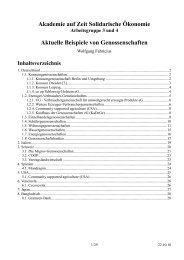sowm_2015__int__africa_full_report_low_res
sowm_2015__int__africa_full_report_low_res
sowm_2015__int__africa_full_report_low_res
You also want an ePaper? Increase the reach of your titles
YUMPU automatically turns print PDFs into web optimized ePapers that Google loves.
Endnotes<br />
1 See “Deaths That Are Urban<br />
Analysis” in Methodology and<br />
Research Notes.<br />
2 United Nations, Department of<br />
Economic and Social Affairs, Population<br />
Division. World Urbanization<br />
Prospects: The 2014 Revision. (New<br />
York: 2014)<br />
3 United Nations. The Millennium<br />
Development Goals Report 2014.<br />
(New York: 2014)<br />
4 A recent WHO analysis of 56 countries<br />
with available urban under-5<br />
mortality data from Demographic<br />
and Health Surveys (DHS) 2000-<br />
2011 showed that in 70 percent of<br />
countries (39 of 56), the poo<strong>res</strong>t<br />
20% of urban children were at least<br />
twice as likely to die as the richest<br />
20% of urban children before<br />
reaching age 5. Data were provided<br />
by the WHO Centre for Health<br />
Development for secondary analysis<br />
by Save the Children, but are now<br />
publicly available at who.<strong>int</strong>/gho/<br />
data under “Urban health”. Data<br />
were used from the latest available<br />
survey for each country.<br />
5 Secondary analysis of data provided<br />
by WHO and available at who.<strong>int</strong>/<br />
gho/data under “Urban health.”<br />
6 The maternal mortality ratio in<br />
two Nairobi slums (Korogocho and<br />
Viwandani) was estimated at 706<br />
per 100,000 live births in 2003-<br />
2005. The 2003 and 2008 Kenya<br />
Demographic and Health Surveys<br />
(KDHS) recorded a national<br />
maternal mortality ratio of 414 and<br />
488, <strong>res</strong>pectively. Sources: Ziraba1,<br />
Abdhalah Kasiira, Nyovani Madise,<br />
Samuel Mills, Catherine Kyobutungi<br />
and Alex Ezeh. “Maternal Mortality<br />
in the Informal Settlements of<br />
Nairobi City: What Do We Know?”<br />
Reproductive Health. 6(6). 2009;<br />
African Population and Health Research<br />
Center (APHRC). Population<br />
and Health Dynamics in Nairobi’s<br />
Informal Settlements: Report of the<br />
Nairobi Cross-sectional Slums Survey<br />
(NCSS) 2012. (Nairobi: 2014)<br />
7 The most recent estimates put the<br />
under-5 mortality rate in Nairobi<br />
slums and for Kenya overall at<br />
80 per 1,000 and 52 per 1,000,<br />
<strong>res</strong>pectively. Source: African Population<br />
and Health Research Center<br />
(APHRC). Population and Health<br />
Dynamics in Nairobi’s Informal<br />
Settlements: Report of the Nairobi<br />
Cross-sectional Slums Survey (NCSS)<br />
2012. (Nairobi: 2014); Kenya National<br />
Bureau of Statistics, Ministry<br />
of Health, National AIDS Control<br />
Council, Kenya Medical Research<br />
Institute, National Council for<br />
Population and Development. Kenya<br />
Demographic and Health Survey<br />
2014: Key Indicators. (Nairobi: <strong>2015</strong>)<br />
8 Secondary analysis of data provided<br />
by WHO and available at who.<strong>int</strong>/<br />
gho/data under “Urban health.”<br />
9 Save the Children’s analysis of data<br />
from The DHS Program’s STATcompiler<br />
(Accessed April 8, <strong>2015</strong>).<br />
Observed differences may not be<br />
statistically significant. If they are<br />
not, urban children in these countries<br />
would be just as likely to die as<br />
rural children.<br />
10 Findings are for 11 countries in the<br />
region with available DHS data.<br />
Both the average share of under-5<br />
deaths as well as the total number<br />
of under-5 deaths in these countries<br />
are estimated to be over 50 percent.<br />
These <strong>res</strong>ults may not be rep<strong>res</strong>entative<br />
of the region as a whole.<br />
Calculations by Save the Children.<br />
For details, see Methodology and<br />
Research Notes.<br />
11 UN IGME. Levels and Trends in<br />
Child Mortality: Report 2014.<br />
12 Kurvilla, Shyama, Julian Schweitzer,<br />
David Bishai, Sadia Chowdhury,<br />
Daniele Caramani, Laura Frost, Rafael<br />
Cortez, Bernadette Daelmans,<br />
And<strong>res</strong> de Francisco, Taghreed<br />
Adam, Robert Cohen, Y. Natalia<br />
Alfonso, Jennifer Franz-Vasdeki,<br />
Seemeen Saadat, Beth Anne Pratt,<br />
Beatrice Eugster, Sarah Bandali,<br />
Pritha Venkatachalam, Rachael<br />
H<strong>int</strong>on, John Murray, Sharon<br />
Arscott-Mills, Henrik Axelson,<br />
Blerta Maliqi, Intissar Sarker, Rama<br />
Lakshminarayanan, Troy Jacobs,<br />
Susan Jacks, Elizabeth Mason, Abdul<br />
Ghaffar, Nicholas Mays, Carole<br />
P<strong>res</strong>ern and Flavia Bustreo. “Success<br />
Factors for Reducing Maternal and<br />
Child Mortality.” Bulletin of the<br />
World Health Organization. 92(7).<br />
July 1, 2014. pp. 533-544<br />
13 UN IGME. Levels and Trends in<br />
Child Mortality: Report 2014.<br />
14 Ibid.<br />
15 Ibid.<br />
16 Save the Children. The Lottery of<br />
Birth: Giving All Children an Equal<br />
Chance to Survive. (London: <strong>2015</strong>)<br />
17 These <strong>res</strong>ults rep<strong>res</strong>ent the average<br />
across countries for which urban<br />
and rural DHS data were available<br />
for under-5 mortality and crude<br />
birth rate from surveys 2000-2013<br />
(Africa=36 countries, Americas=8<br />
countries, Asia=16 countries). In<br />
the Americas, both the average<br />
share of under-5 deaths as well as<br />
the total number of under-5 deaths<br />
are estimated to be over 50 percent.<br />
Findings may not be rep<strong>res</strong>enta-<br />
70 Endnotes




